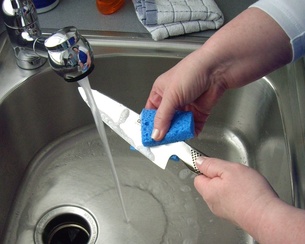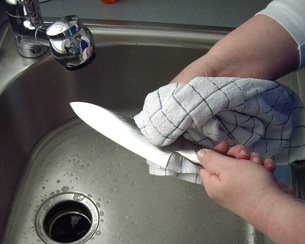Note from Kathy:
I get a lot of questions and comments on pressure cookers. Those that have one swear that they are great, even for the beginner cook.
Kevin Wagner recently did a great post on “Pressure Cookers – The Original Microwave” where he described in great detail the fundamentals of a pressure cooker. Here, Lisa is carrying on with the story. I am slowly coming around to the notion of buying one. In the meantime, I am delighted that we have Kevin and Lisa to share their expertise on pressure cookers!
Cheers!
Kathy
*****
Pressure Cookers have gotten a bad rap, and it’s no wonder. I have a distinct childhood memory of my mother making lentil soup in a pressure cooker, when – splat! – the steam cap erupted and the lentils went flying onto the ceiling and walls. These days, pressure cookers are a bit different, and certainly safer and easier to operate. Once you use one, you’ll wonder how you ever got along without it!
How Pressure Cookers Work
Pressure cookers look like an ordinary pot with a cover, but they’re actually tightly sealed vessels that can cook food very quickly. So, a soup that takes four hours to make normally, could take as little as 45 minutes in a pressure cooker. Special valves release air slowly so that the pressure doesn’t build to the point that the darned thing pops. It’s a kitchen marvel, really.
Great Reasons to Own a Pressure Cooker
- Shorter cooking times help retain the vitamins and nutrients in the food
- Food cooks up to 75 per cent faster than in a regular stock pot
- Saves gas/electricity on your stovetop/oven because food takes less time to cook
- Reduced mess and clean-up since everything cooks in one pot
Choosing a Pressure Cooker
Buying a pressure cooker is pretty straightforward. The big, stainless steel models can be cost a few hundred dollars, but a decent pot can be had for U.S. $75 or less if you catch a good sale. They range in size from 4 to10 quarts; I would recommend buying one with at least a 6-quart capacity. Also, look for heat-resistant handles.
Please, don’t buy a pressure cooker at a garage sale. These old behemoths do not have the safety features that are in use today. It’s not worth scalding yourself to save a few dollars on a used pot. Buy one manufactured in the last 3 years so that you get the latest technology available. Get a stovetop pot and not an electric one, please.
I highly recommend the Fagor brand of cookers. It’s great value for money, has helpful features and is made of stainless steel rather than aluminum. The pressure valve is not a moving part or a spinning top that could pop off. It’s also really easy to open, which is definitely a consideration, as a pressurized pot can take some serious muscle to open if it’s not well designed.
What To Cook in a Pressure Cooker
Soups, stews and beans are a natural fit for pressure cookers. Pot roasts turn out so tender you’ll kick yourself for not having bought one of these things sooner. Potatoes are a snap, and chili is a no-brainer. You can also steam vegetables in a pressure cooker in just 2-3 minutes. There are all kinds of recipes out there to try.
Keeping track of cooking time is important when it comes to pressure cooking, so use an oven timer to make sure you’re not overdoing things. Vegetables, for example, can turn into a soggy mess if you don’t keep an eye on the time.
Also, don’t use your pot for anything other than pressure cooking. I’ve seen people ruin a perfectly good one trying to fry up chicken wings in it. That’s a no-no, unless your pot instructions specifically say that you can.
So, go get yourself a pressure cooker and you’ll see how easily one of those slow-cooked meals like grandma used to make can be sped onto your dinner table in no time.

















